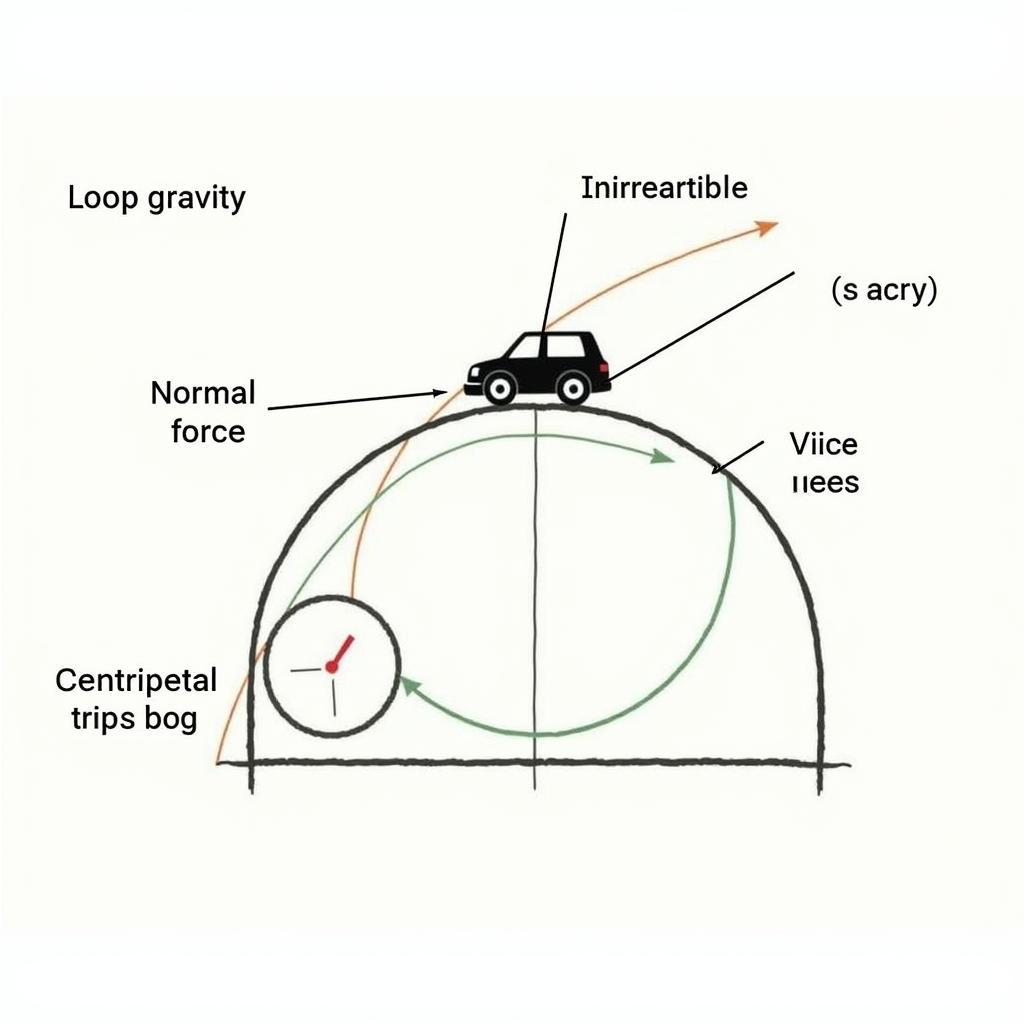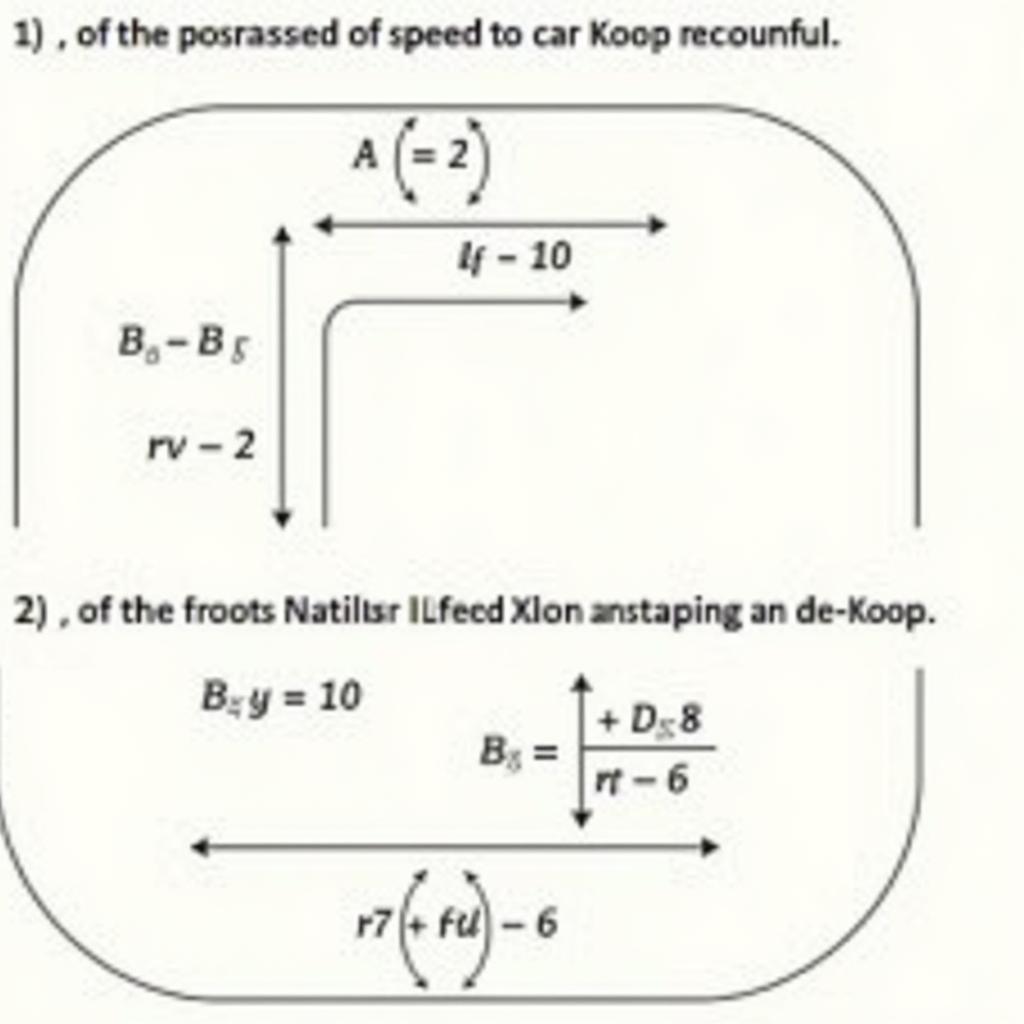Understanding the physics behind a car navigating a loop-de-loop is crucial, not just for acing Physics C, but also for grasping fundamental principles of automotive engineering. This problem explores the delicate balance of forces and energy that allows a car to defy gravity and successfully complete the loop. We’ll delve into the core concepts, address common misconceptions, and provide practical insights relevant to automotive maintenance and repair.
Breaking Down the Loop-de-Loop: Force and Energy
The key to solving the loop-de-loop problem lies in understanding two main concepts: centripetal force and conservation of energy. At the top of the loop, the car needs enough speed to generate sufficient centripetal force to counteract gravity. This force is what keeps the car moving in a circular path, preventing it from falling. Simultaneously, the car’s initial energy, primarily kinetic, transforms into a combination of kinetic and potential energy as it ascends the loop.
 Car Loop-de-Loop Forces Diagram
Car Loop-de-Loop Forces Diagram
The minimum speed required at the top of the loop is determined by the balance between gravity and the centripetal force needed to maintain circular motion. If the car’s speed falls below this critical threshold, it loses contact with the track and falls.
Physics C Problem: Calculating Minimum Speed
To calculate the minimum speed, we use the following equation at the top of the loop: mg = mv²/r, where m is the mass of the car, g is the acceleration due to gravity, v is the velocity, and r is the radius of the loop. Notice that the mass of the car cancels out, indicating that the minimum speed is independent of the car’s weight.
 Car Loop-de-Loop Minimum Speed Calculation
Car Loop-de-Loop Minimum Speed Calculation
Simplifying the equation gives us v = √(gr). This equation reveals that the minimum speed required at the top of the loop is directly proportional to the square root of the loop’s radius. A larger loop, therefore, demands a higher minimum speed.
Practical Implications for Automotive Professionals
While the Physics C Problem Where Car Goes Around A Loop might seem purely theoretical, understanding the principles has real-world implications for automotive professionals. The concepts of force, energy, and motion are essential for diagnosing and repairing vehicle issues related to suspension, steering, and braking systems. For example, understanding centripetal force helps in analyzing tire wear patterns and suspension performance during turns.
“Understanding the physics behind vehicle dynamics is essential for any serious automotive technician,” says Dr. Emily Carter, a leading automotive engineer. “It allows for a deeper understanding of how the various components of a car interact and influence performance and safety.”
 Car Suspension System and Loop-de-Loop Physics
Car Suspension System and Loop-de-Loop Physics
Energy Conservation and Fuel Efficiency
Beyond the loop-de-loop, the principle of energy conservation plays a significant role in fuel efficiency. Minimizing energy loss due to friction and drag is a key focus in automotive design. This is why factors like tire pressure, aerodynamic design, and proper wheel alignment are crucial for optimizing fuel consumption.
“Even a seemingly small issue like underinflated tires can significantly impact fuel efficiency due to increased rolling resistance,” explains automotive expert, Mr. David Miller, a seasoned mechanic with over 20 years of experience. “This directly relates to the principles of energy conservation we see in the loop-de-loop problem.”
Conclusion
The physics c problem where car goes around a loop provides a valuable framework for understanding the interplay of forces and energy in vehicle dynamics. This understanding is not just crucial for academic success but also has practical implications for automotive maintenance, repair, and design. By grasping these fundamental concepts, automotive professionals can better diagnose issues, improve vehicle performance, and enhance safety. Need further assistance with your automotive challenges? Contact AutoTipPro at +1 (641) 206-8880 or visit our office at 500 N St Mary’s St, San Antonio, TX 78205, United States. We’re here to help you navigate the complexities of automotive technology.





Leave a Reply